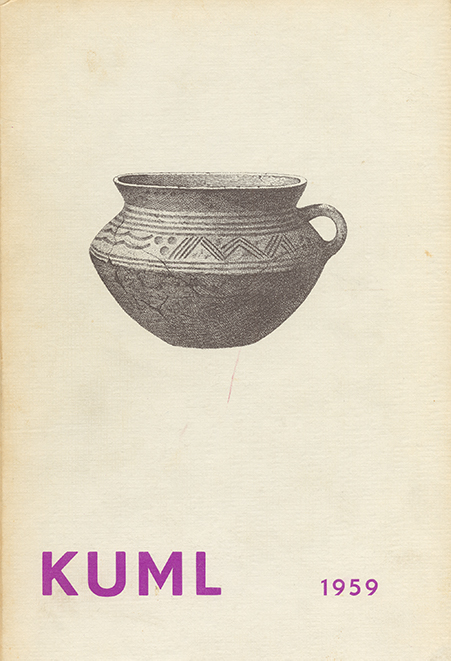Gudmund Hat
DOI:
https://doi.org/10.7146/kuml.v9i9.103038Keywords:
Gudmund Hatt, Memorial, mindeordAbstract
GUDMUND HATT
Like a fresh squall - squall indeed, for breeze is too light a word - Hatt came storming in the Twenties in over archeological field-work in Denmark, at least the field-work which covered settlements house-sites and fields, especially of the lron Age. True that the National Museum had experience in these matters, but its people were at that time to a degree inhibited by the old and somewhat tyrannical excavation technique worked out in the Nineties, which could allow the archeologist to return home from his site with service fully paid to the square-meter-system rather than to the realities of life which it covered. When Hatt came to the National Museum he was already, in other fields than the archeological, a tried and mature research-worker. He broke through. He was not one who would stand still before an established technique. A score of years ago I had occasion to write the following, from personal experience, about Hatt's contribution:
"It can scarcely be doubted that several of the earlier investigations of settlements, which describe culture levels, stone-settings, and the like, in fact dealt with remains of houses, the type and extent of which were not recognised. That stone-settings on lron-Age settlements as a rule do not comprise the actual house-sites but on the contrary the area immediately surrounding them (the cobbled yards, roads and paths) is a view which we owe to Hatt's researches, just as it is he who has taught Danish archeologists the difficult art of recognising the traces of prehistoric houses which have not been destroyed by fire."
Hatt united a clear and powerful breadth of view with a close attention to detail. With massive energy, untiringly and with harsh demands upon himself and others, Hatt threw himself into his work - with results that measured up to the effort. Look only at his literary production! The whole way of life and work, the basic premises of existence of the Iron-Age farmer is here illuminated by a wealth of facts. Long will researchers dip into the overflowing cauldrons of Hatt's treatises. His two main subjects are, of course, prehistoric houses and prehistoric fields. From site to site he moved his tent over north and west Jutland, quartering his ground like a burly buzzing bumble-bee. Skørbæk Solbjerg Fredsø Ginderup Rødklit Nørre-Fjand Oksbøl - a handful only among a riot of flowers. And for the recognition, demonstration and preservation of our prehistoric fields of Jutland Hatt was pioneer and prophet.
It must give him satisfaction that the next generation of Danish archeologists can do other and more than passively accept and exploit his achievements. That they also can pioneer!
Johannes BrøndstedDownloads
Published
How to Cite
Issue
Section
License
Fra og med årgang 2022 er artikler udgivet i Kuml med en licens fra Creative Commons (CC BY-NC-SA 4.0).
Alle tidligere årgange af tidsskriftet er ikke udgivet med en licens fra Creative Commons.


